|
Household hazards |
Paediatric exposure management |
Symptoms that require medical attention |

|
Boric acid-based ant baits
- Contains protein or sugars to attract ants, therefore making it palatable to children
- “Slime”, either commercially prepared or home-made, often contains boric acid, but usually at a lower concentration than ant bait
- Ant baits may contain an alternative active ingredient; check toxicity with the NPC
|
- Contact the NPC for a specific weight-based calculation of toxicity
- Can cause gastrointestinal upset, which may be a blue/green colour17
- Larger ingestions can result in an erythematous or ‘boiled lobster’ rash and progress to skin desquamation within 24 – 48 hours13
- Maintain a reasonable fluid intake for 24 hours following exposure
- Dermatitis-like symptoms can be managed with emollient creams and topical corticosteroids (severe cases)
|
- Persistent gastrointestinal upset
- Drowsiness
- Rash
- Reduced urine output* (acute kidney injury is possible with larger ingestions)
* Can be difficult for caregivers to assess at home |

|
Dishwasher tablets (and powders)
- Common ingedients include sodium carbonate, sodium triphosphate and sodium percarbonate18
- Between 2003 and 2005, 11 children were admitted to Starship Children’s hospital after ingesting dishwasher powders; five children were treated in the paediatric intensive care unit for corrosive injuries18
- Since 2006, legislation has passed aiming to reduce the risk of alkaline chemical burns, which prohibits the sale of dishwashing products with pH > 12.518, 19
|
- Small ingestions of dishwasher tablets or powder (or residue from a previous wash cycle) are unlikely to cause significant symptoms
- As a precaution, withhold food and fluid for at least one hour after exposure
- If the child is asymptomatic after one hour, start introducing small amounts of clear fluids
- Oesophageal injury can occur without obvious lip or oral burns
|
- Swelling or blistering of the oral cavity
- Chest/epigastric pain
- Multiple episodes of vomiting
- Haematemesis
- Drooling
- Dysphagia
- Breathing difficulties/stridor
- Abdominal pain or distension
- Refusal to feed in infants or non-verbal children
- Any ocular exposure
|
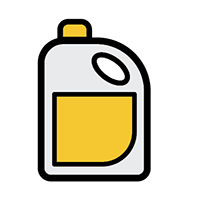
|
Domestic bleaches
(Sodium hypochlorite)
- Paediatric ingestions of bleach are generally of low toxicity, with domestic solutions commonly containing less than 6% sodium hypochlorite12
- When bleach is mixed with an acid-based cleaner, e.g. vinegar (acetic acid) or products containing citric acid, chlorine gas is released † 12 (see: “Focus: chlorine products are common sources of household poisonings”)
† Ammonia-based cleaning products release chloramines when mixed with bleach (sodium hypochlorite), resulting in similar upper respiratory tract and eye irritation as chlorine gas12 |
- Large ingestions or any ingestion of products that contains more than 6% sodium hypochlorite can result in serious injury to the airway or gastro-oesophageal tract
- Ingestion of < 40 mL of domestic bleach in children is unlikely to cause more than minor, resolving oral irritation and mild vomiting12
- Withhold food and fluid for at least one hour after exposure
- If child is asymptomatic after one hour, start introducing small amounts of clear fluids
- Oesophageal injury can occur without obvious lip or oral burns
- Dermal exposure to household hypochlorite products is not expected to cause more than temporary irritation and possible bleaching of the skin, if decontamination occurs soon after exposure12
|
- Swelling or blistering of the oral cavity
- Chest/epigastric pain
- Multiple episodes of vomiting
- Haematemesis
- Drooling
- Dysphagia
- Breathing difficulties/stridor
- Abdominal pain or distension
- Refusal to feed in infants or non-verbal children
- Any ocular exposure
|
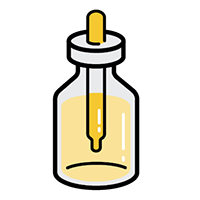
|
Essential oils
- Mixtures of volatile aromatic hydrocarbons used in aromatherapy, decongestants and cleaning products20
- Reduced flow lids or droppers may limit the quantity ingested in an exposure
|
- Contact the NPC for management advice for a specific product as toxicity differs between types of essential oils
- Any ingestion of clove oil or oil of wintergreen in young children can cause significant toxicity and requires medical assessment and observation20
- Small ingestion of blended oils can be closely monitored at home
- Minor gastrointestinal upset is possible with ingestion
- Withhold food and fluid for at least one hour
- Essential oils can cause eye and skin irritation
|
- Persistent gastrointestinal upset
- Persistent coughing or choking
- Abdominal pain
- Drowsiness
- Ataxia
- Seizure
|
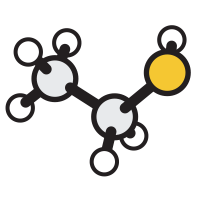
|
Ethanol
- Includes alcoholic beverages, antiseptics, window cleaners, methylated spirits, perfumes and mouth washes
- Hand sanitisers (60 – 80% ethanol) and methylated spirits (95 – 99% ethanol) are of particular concern due to high ethanol contents21, 22
- Ethanol metabolism occurs via different pathways in children compared to adults (due to lower levels of alcohol dehydrogenase) and is more likely to result in hypoglycaemia23
|
- Contact the NPC for specific weight-based calculation of toxicity
- The child’s mouth should be rinsed
- Minor gastrointestinal upset is possible with ingestion
- Give small amount of food (e.g. white bread)
|
- Persistent gastrointestinal upset
- Intoxication/unusual behaviour
- Drowsiness
|

|
Foaming products
- Includes dishwashing liquids, hand soaps, bubble blowing mixture
- The foaming nature of these products presents an aspiration risk8
|
- Most ingestions can be monitored at home
- The child’s mouth should be rinsed and unless specified withhold food and fluid for at least one hour
- Minor gastrointestinal upset is possible with ingestion
|
- Persistent gastrointestinal upset (to the point of dehydration)
- Coughing or choking
|

|
Irritants
- Cosmetic products (e.g. make-up, moisturiser), barrier creams (e.g. Sudocrem, Bepanthen) and toiletries (e.g. shampoos, body wash) are only gastric irritants
- Glow stick ingredients vary slightly but can include dibutyl phthalate, oxalates and hydrogen peroxide; minimally toxic in these quantities
|
- Most ingestions can be monitored at home
- The child’s mouth should be rinsed
- Minor gastrointestinal upset is possible with ingestion
- Small quantities of milk or yoghurt may help persistent oral irritation10
|
- Persistent gastrointestinal upset (to the point of dehydration)
|
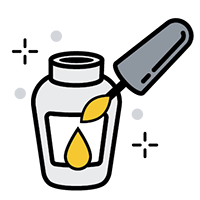
|
Nail polish
- Usually composed of resins and dye in a solvent base with a plasticiser, e.g. cellulose24
- Minimally toxic to children due to viscosity and small package size25
|
- Most ingestions can be monitored at home
- The child’s mouth should be rinsed
- Minor gastrointestinal upset is possible with ingestion
- Dermal exposure may cause minor irritation; wash off with soap and warm water (or acetone-free nail polish remover if required)
|
- Persistent gastrointestinal upset (to the point of dehydration)
- Drowsiness
- Persistent coughing
- Breathing difficulties
|

|
Reed diffusers
- Typically consist of an open vessel or reservoir containing 100 – 250 mL of fragrance liquid and ‘wicking reeds’, e.g. bamboo26
- The fragrance liquid can contain a variety of ingredients including essential oils, glycol ethers, hydrocarbons, ethanol and isopropanol27
|
- Most small ingestions can be monitored at home
- The child’s mouth should be rinsed, withhold food and fluid initially to let stomach settle
- Minor gastrointestinal upset is possible with ingestion
- Symptoms are not expected from sucking on the ‘reeds’ 27
|
- Persistent gastrointestinal upset
- Abdominal pain
- Drowsiness
- Persistent coughing
- Breathing difficulties
- Fever
- Lower back/flank pain or decreased urine output
|
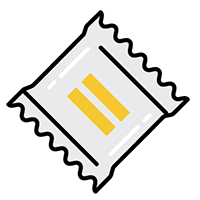
|
Silica gel
- The desiccants often display a warning label, e.g. ‘Do not eat’, however, this is not because the product is toxic
- Ingestion of the entire desiccant (including paper/cloth packaging) may pose choking or obstruction risks for children28
|
- Ingestions of silica gel granules can be monitored at home
- Minor gastrointestinal upset is possible with ingestion
- Children who ingest the entire desiccant should be assessed at the emergency department for determination of the object’s location
|
- Persistent gastrointestinal upset
- Abdominal pain or constipation
|

|
Superglue
(Cyanoacrylate)
- Cyanoacrylate adhesive exposures do not usually cause systemic toxicity but can be both painful and distressing
- Polymerisation (sticking) is usually rapid but adherence to the oral cavity or oesophagus is unlikely due to saliva and mucous membranes29
|
- If a child’s lips are stuck together (or their lips are stuck to their teeth), irrigate with warm water and then peel or roll lips apart; petroleum jelly (e.g. Vaseline) may help
- Vegetable oil or margarine may be effective to release fixed glue in the mouth
- Acetone can be used to dissolve hardened glue and is appropriate to use on dermal adhesions (avoid eyes)30, 31
- A pumice stone may be used to remove hardened glue after the affected area has been soaked in warm water31
- Caregivers should not attempt to separate child’s eyelids at home after an ocular superglue exposure
|
- Choking
- Tongue is stuck to lips or teeth (and removal has been unsuccessful at home)
- Hardened glue in the ear or nostril
- Any ocular exposure
|
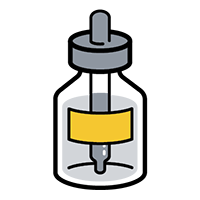
|
Vape liquids
(Nicotine)
- High concentrations and liquid formulations can result in significant nicotine exposure from very small ingestions
- Nicotine is rapidly absorbed and severe symptoms can develop within four hours of ingestion32
|
- All possible ingestions of liquid nicotine products in children should be referred to the emergency department for monitoring
- Dermal absorption is possible with prolonged skin exposure to high concentration products32
- Vape liquids should be washed off the skin with water and soap as soon as possible32
- Children who develop systemic symptoms require medical assessment
|
- Gastrointestinal upset
- Tachycardia
- Sweating
- Drooling
- Drowsiness
- Pallor
|
Abbreviation: NPC, National Poisons Centre |
|
